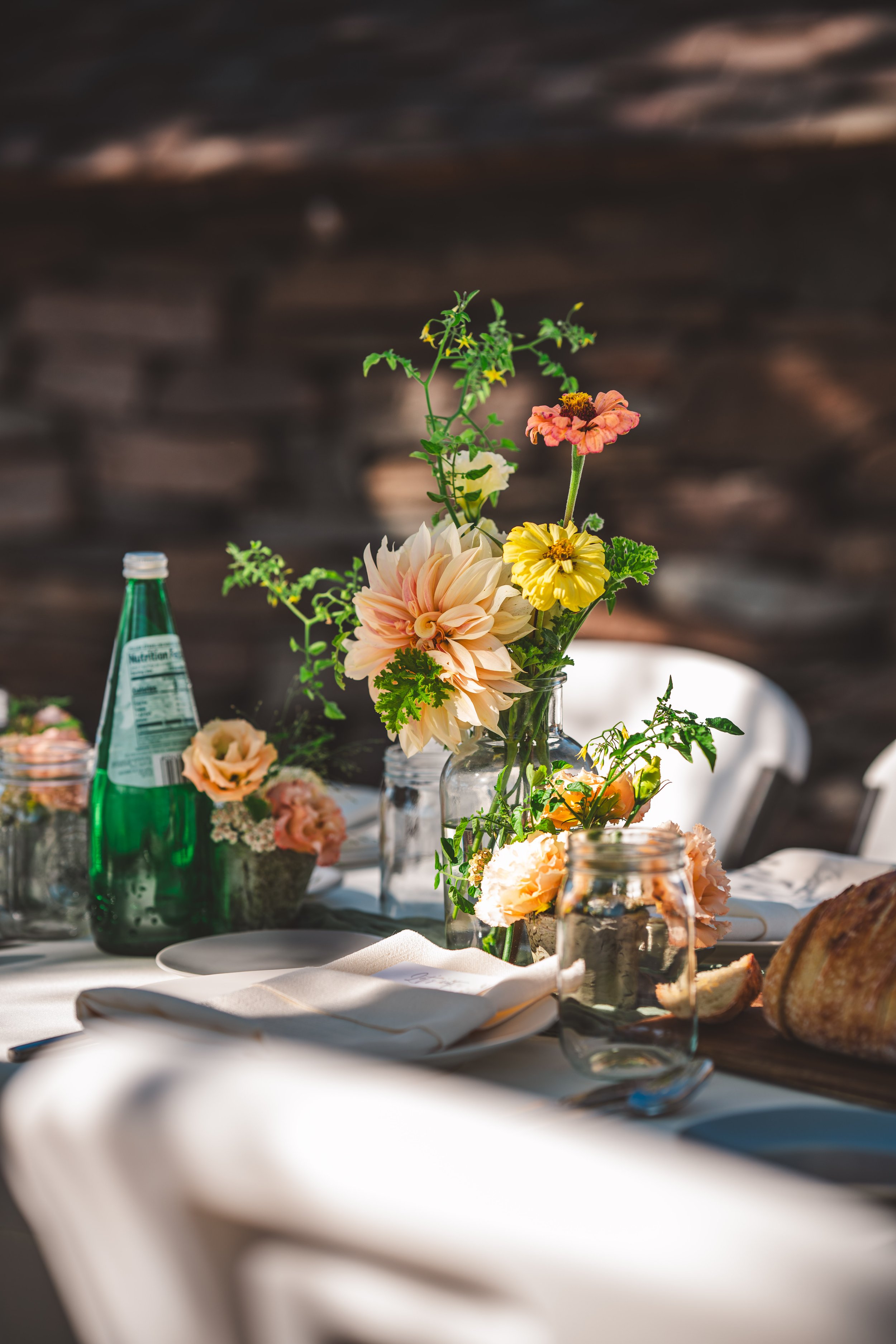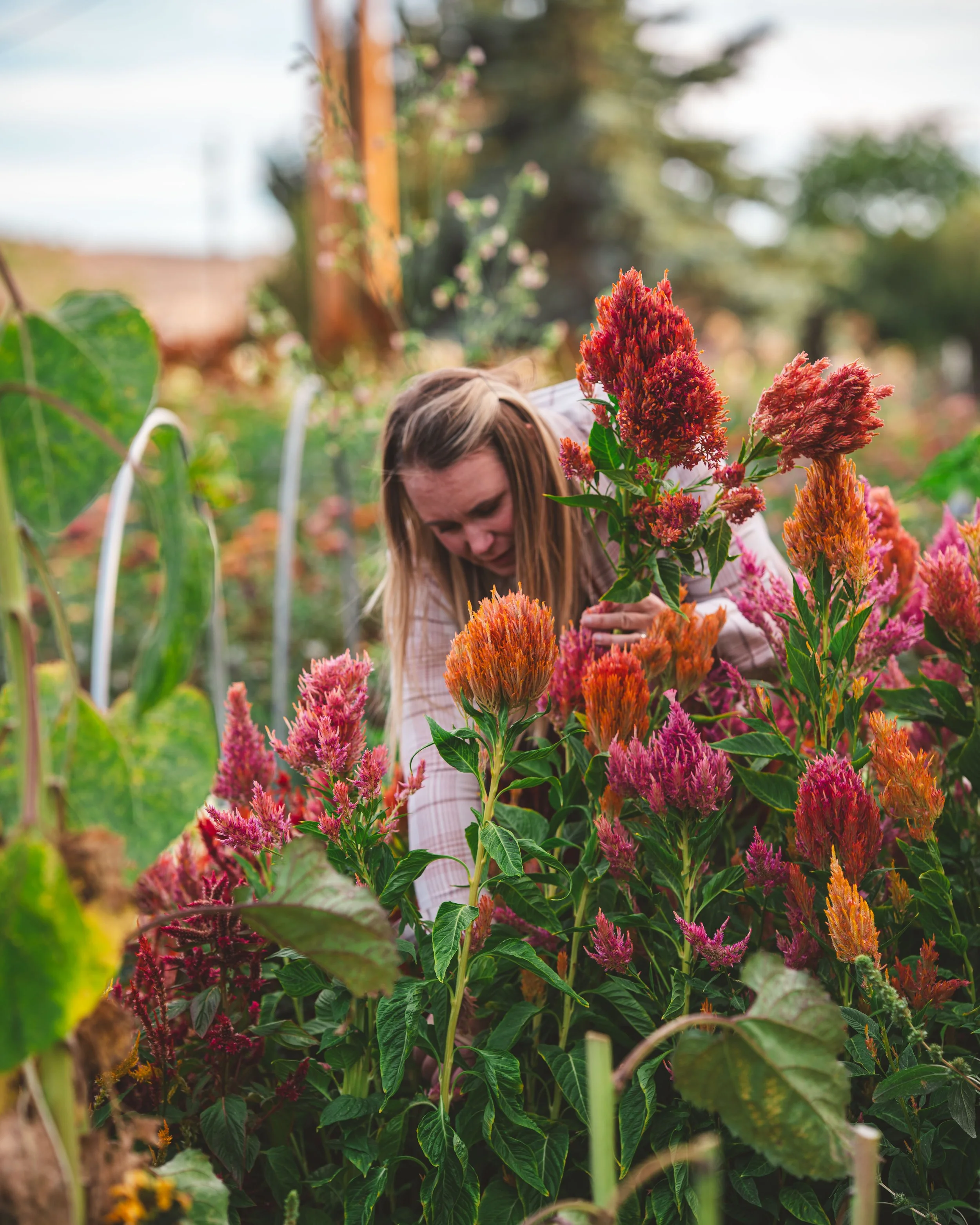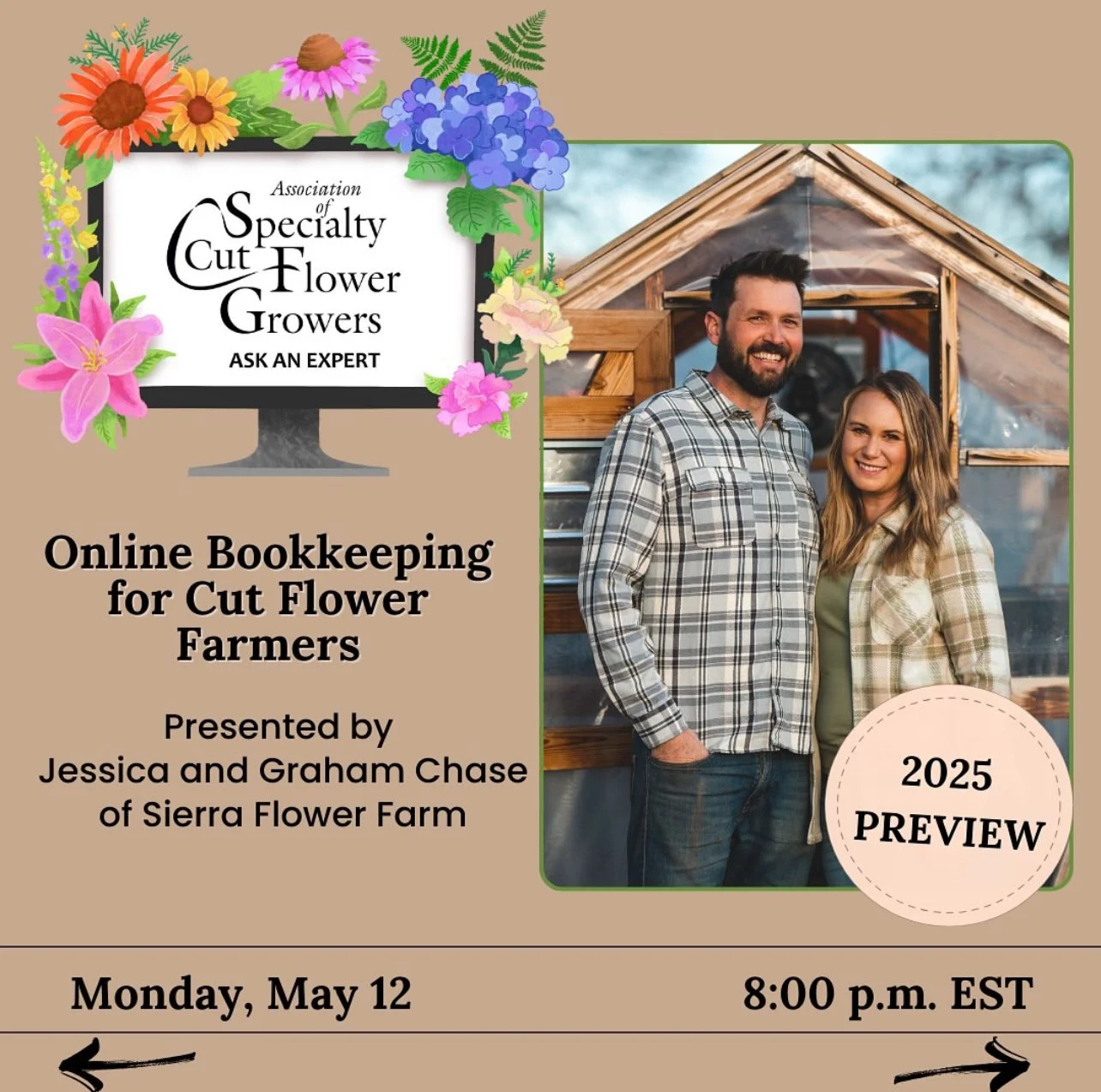Marketing Basics for Flower Farmers: Pricing (Part Two)
Pricing your flowers is one of the most challenging—but essential—parts of running a profitable flower farm.
Between the hard work you pour into every bloom and the practical need to make a living, finding the right price can feel like a guessing game. But with a bit of strategy and a clearer understanding of your costs and market, pricing doesn’t have to feel so overwhelming.
In this post, we’ll break down what goes into effective pricing—from knowing your numbers to understanding your local demand. Whether you’re just starting out or adjusting your pricing after a few seasons, this guide will help you price with confidence and purpose.
What This Post Covers
In this post, we’ll walk through key pricing foundations, including:
Understanding your Cost of Goods Sold (COGS)
Factoring in market demand and competition
Building confidence in your pricing decisions
Whether you're just starting out or want to fine-tune your approach, this guide will help you price your flowers with more clarity and confidence.
A vintage sap bucket nestled between rows of dahlias—where beauty meets hard work.
Know Your Costs
Before you can price anything, you need to understand what it costs you to grow and sell your product. That’s where Cost of Goods Sold (COGS) comes in.
COGS includes all of the direct costs involved in producing your flowers—from seed to sale. For flower farmers, that might include:
Seeds, bulbs, or plant starts
Fertilizers and soil amendments
Water and irrigation
Tools, sleeves, rubber bands, and packaging
Labor (your own or hired help)
You don’t need to calculate the exact cost per stem (unless you want to), but having a general idea of your total production costs helps ensure your pricing covers your expenses—and leaves room for profit.
Quick Tip:
Start by keeping it simple. Record your expenses in a spreadsheet or use basic bookkeeping software. You can refine things over time as you get more comfortable with your numbers.
Want to dive deeper into managing costs?
Check out our related blogs linked below.
Competition
Understanding your competition is key to setting fair, market-aware prices.
By analyzing similar businesses in your area or niche, you can identify pricing benchmarks and confidently shape your own strategy.
Here’s how to start:
1. Research Competitors
Look at local flower farmers, florists, or anyone offering similar products.
Ask yourself:
How are their flowers priced?
What quality or style are they offering?
Are they using unique design elements, packaging, or messaging?
2. Evaluate Your Differentiators
What makes your farm stand out?
It could be:
The freshness of your blooms
The rare or heirloom varieties you grow
A strong brand presence or customer experience
These qualities can help justify a higher price point or attract a loyal customer base.
3. Conduct a SWOT Analysis
Break down the Strengths, Weaknesses, Opportunities, and Threats of both your business and your competitors.
This can reveal where you shine—or where you may want to refine your offerings.
Pro Tip:
Keep track of what sells best—for both you and your competitors.
Regularly review which products are most profitable or in demand, and use that insight to adjust pricing or offerings strategically.
By understanding your market and how you fit into it, you can price your flowers confidently—while also showing customers the unique value you bring.
Not sure which decisions are driving profits (or costing you)?
Learn how to evaluate your financial choices and boost your flower farm's profitability by clicking the button below.
Consumer Demand
Is there demand for the product you’re offering?
Understanding what your customers want—and how much they’re willing to pay—is key to pricing effectively.
Why Demand Matters
Flowers are often considered a high-demand luxury item, but demand can vary widely depending on:
Seasonality
Location
Market trends
Customer type
For example:
A bouquet that sells out at an urban farmers’ market might not move as quickly in a rural area filled with hobby growers.
On the flip side, offering unique or hard-to-find varieties can give you a competitive edge in almost any market.
How to Assess Demand
Ask Your Customers
Use polls, Instagram stories, or in-person convos to learn what customers want more of.Engage Your Community
Talk with local florists, event planners, and businesses to see what’s trending and in demand.Monitor Sales Trends
Track what sells well at different times of year. Patterns will help you adjust pricing and product offerings over time.
Supply and Demand Basics
If demand is high and supply is limited, you can often charge a premium.
If demand is low or your product is widely available, pricing may need to be more competitive.
Example:
In a rural market where customers grow their own flowers, common blooms like sunflowers might sell at a lower price.
But rare or specialty dahlias? Those could command much more—especially if no one else is offering them.
By tuning in to customer demand, you’ll be able to align your offerings with what people are excited to buy—while staying profitable.
Sales Outlet
Where and how you sell your flowers directly impacts your pricing.
Different outlets come with different overhead costs, pricing expectations, and customer experiences.
Common Sales Outlets to Consider:
Farmers’ Markets
Direct-to-consumer with lower overhead, but customers may expect competitive pricing.Brick-and-Mortar Stores
Partnering with shops or florists expands reach, but requires wholesale pricing, reducing your profit margins.Pop-Ups and Events
Craft fairs, weddings, and special events can justify premium pricing, especially if your booth is visually strong.On-Farm Sales
U-pick experiences or farmstands give you full control of pricing and customer connection.Online Sales
Selling bouquets or subscriptions online broadens your audience but may involve added delivery and packaging costs.
Adjust Pricing to Match the Outlet
Each outlet has its pros, cons, and financial dynamics:
Higher Overhead
If booth fees or retail commissions are involved, build that into your pricing.Customer Perception
Customers buying directly from your farm may expect lower prices than those buying from a high-end boutique.
Example:
A bouquet might sell for $25 at a farmers’ market, but only $15–$18 wholesale to a florist (who will mark it up for resale).
The same bouquet could sell for $30+ at a boutique event with the right atmosphere and clientele.
By understanding the dynamics of each sales channel, you can adjust your pricing to protect your profit—while still delivering value to your customers.
Curious about which outlets are right for you?
Check out our guide on how to sell flowers directly to customers—and make the most of each sales opportunity.
Marketing Objectives
What’s your goal when pricing your flowers? Is it to maximize profit, increase awareness of your flower farm, or move a surplus of blooms quickly? Defining your objectives can help you set pricing strategies that align with your business goals.
Key Objectives to Consider:
Maximizing Profit: For premium blooms like specialty dahlias or event arrangements, you might aim for higher profit margins to reflect the value of your work and materials.
Building Awareness: If you’re new to the market or introducing a new product, pricing competitively or offering specials can attract attention and build your customer base.
Moving Surplus: For crops like sunflowers or zinnias in peak season, you may need to lower prices to sell quickly and avoid waste.
Supporting Your Brand: Pricing can also position your brand as a luxury, artisan experience or as an affordable, local option, depending on your target market.
Adapting Objectives to Your Situation:
Your objectives may change depending on the product, season, or sales outlet. For example:
A CSA bouquet might be priced to maximize retention and loyalty over profit.
Bulk flower sales to florists: Pricing can be structured to encourage repeat business and streamline sales, even if the price per stem is slightly lower than direct-to-consumer sales.
Offering early bird pricing or pre-order incentives can encourage commitment and boost sales while maintaining profitability.
Location
When it comes to pricing, location plays a huge role. Your local market, demographics, and geographic context directly impact what your customers are willing to pay and how much it costs to produce your flowers.
Factors to Consider:
Local Economy: Pricing in a high-cost-of-living area like Seattle or San Francisco will differ greatly from pricing in a rural Midwest town. Customers’ purchasing power often reflects the broader economic conditions of your region.
Customer Demographics: Who are your customers? Are they retirees, young professionals, or destination brides? Knowing your audience helps you tailor prices to match their expectations and budgets.
Growing Costs: Your location also affects production costs. For example, high-altitude flower farming or sourcing compost in remote areas may increase expenses. These higher costs need to be reflected in your pricing to maintain profitability.
Example:
Our farm is located in a rural but wealthy area, with Bay Area retirees and Lake Tahoe destination weddings contributing to our customer base. This unique mix allows us to price our flowers competitively, even though production costs are higher due to our challenging growing conditions, such as high-altitude weather swings and limited access to affordable compost.
By understanding how your location affects both costs and customer expectations, you can set prices that work for your business while appealing to your local market.
Using Stem Count, aka “Flower Math”
If figuring out pricing from scratch feels overwhelming, “flower math” can be a game-changer. This method simplifies pricing by focusing on stem counts and industry-standard markups, giving you a structured approach to pricing bouquets and arrangements.
How to Use Flower Math:
Find Your Base Costs: Start by calculating the cost per stem. This includes direct expenses like seeds, labor, and packaging. If you’ve already done a cost analysis for wholesale pricing, you can use that information as a starting point.
Apply Markups:
For retail sales (e.g., farmers’ markets or direct-to-consumer bouquets), a standard markup is 2x your base costs.
For event or wedding arrangements, markups typically range from 2.5x to 3x the base costs, with an additional percentage for labor (commonly 20-30%).
Caveat: These markups can vary depending on your market. Factors like your location, customer base, and competition may influence whether you adjust up or down. For example, rural areas might favor slightly lower markups, while urban or luxury markets may support higher ones.
Designing to Fit Budgets:
Whether you’re setting a price point or working within a client’s budget, stem counts and pricing formulas can help you create beautiful arrangements while staying profitable.Examples:
A $25 bouquet might include 10 stems at $1.25 each, plus packaging and labor.
For a $100 budget, you can calculate how many premium stems (like dahlias) and filler flowers to include.
If a client provides a specific budget, you can work backward by starting with their total and breaking it down by stem cost, labor, and packaging to ensure both value and profitability.
Why It Works:
Flower math ensures that you’re accounting for all your costs while giving customers a clear and consistent value. Over time, this method can help you confidently price your products and streamline your workflow.
Raising Prices
Everything seems to be getting more expensive these days, and flower farming is no exception. If rising costs have you considering a price increase, it’s essential to approach it thoughtfully to maintain customer trust while ensuring your business remains profitable.
When to Raise Prices:
Increased Costs: Higher prices for supplies like compost, seeds, or packaging may require a price adjustment.
Inflation: If overall costs are rising, it’s reasonable to increase your prices in line with the market.
Demand Growth: When demand for your flowers consistently outpaces your supply, a price increase can reflect their value.
How to Raise Prices Effectively:
Make Small Adjustments: Instead of large jumps, increase prices gradually—typically between 2-7%—to minimize customer pushback.
Highlight Added Value: If possible, pair price increases with visible improvements, like better packaging, new varieties, or expanded services.
Communicate Transparently: If you’re in direct contact with customers (like CSA members or regular buyers), a simple, positive explanation can go a long way. For example:
“To continue offering the same high-quality flowers you’ve come to love, we’ve adjusted our pricing slightly to reflect increased costs.”
Example:
A $25 bouquet could be raised to $27.50 to account for rising expenses. Over time, these small adjustments add up, ensuring your pricing keeps pace with your costs.
Pro Tip: If you’re unsure about raising prices across the board, consider introducing a premium option at a higher price point. This allows you to test demand for higher prices without alienating existing customers.
Pricing your flowers isn’t just about numbers; it’s about understanding your costs, your customers, and your market. By using strategies like flower math, considering your sales outlets, and aligning your pricing with clear objectives, you can confidently price your blooms for both profit and customer satisfaction.
Ready to take your marketing to the next level? In Part Three: Mastering Promotion for the Flower Farmer, we’ll dive into how to showcase your flowers effectively and connect with your ideal customers. From advertising tips to building authentic connections, this next step in the series will help you grow your flower farm business.
Read Part Three: Mastering Promotion for the Flower Farmer →
We are looking forward to sharing more blooms with you soon.
Jessica & Graham
Join Us on May 12th, 2025, for ASCFG Ask the Experts!
We’re thrilled to be guest speaking on online bookkeeping as part of the Association of Specialty Cut Flower Growers (ASCFG) Ask the Experts series! Whether you're just getting started or looking to streamline your current system, we'll be sharing practical tips and insights to help keep your flower farm’s finances in top shape.
This session is exclusive to ASCFG members, so be sure to sign up today to secure your spot! We can't wait to see you there!










